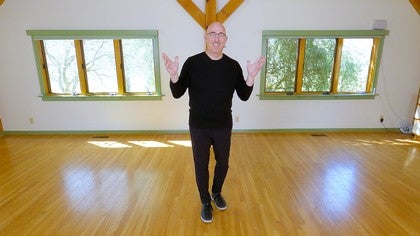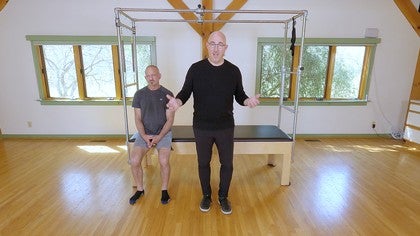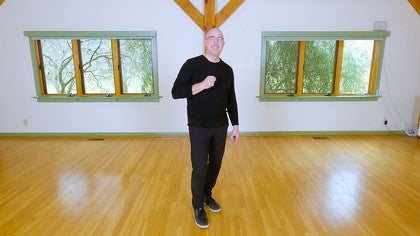Description
About This Video
Transcript
Read Full Transcript
Joseph Pilate's book called "Return to Life" has always been a motivation for me to think of the big picture. Sometimes we get hung up on thinking of what the pathology is, rather than thinking of what is that people wanna participate in. In the medical profession, we have what's called the ICF, the International Classification of Function and Disability. And this particular classification system allows us to identify, is that individual able to participate where they believe they should participate. So often, the first question that I ask my client is what do you believe you should be able to participate in that you currently are not participating in?
This is a very powerful question. Often, I'll get questions that are very well aligned, like they just wanna be able to pick up a grandchild, or they wanna be able to go gardening, or they wanna go hiking. Sometimes I get answers that are very malaligned like, "I wanna climb Mount Kilimanjaro," and this person hasn't been out of their desk for 35 years. And the idea here is alignment. In Pilates, we talk about alignment all the time.
And alignment is not just alignment of our bodies. Alignment could also be alignment of our belief with our realities. And so one of our job is to help coach individuals, and help them find that alignment between those two things, of their belief and their function. People are not going to be happy if they believe they should be doing something and they can't do it. And so one of our goals when we look at all the individuals coming in, particularly as we're talking about a total knee replacement or major knee surgery recovery is understanding what it is that they want to participate in.
What does return to life look like for our clients? There are also things to take into consideration, right? So there are things that are called comorbidities or other health conditions that might be getting in the way of rehabilitation that are far outside of our scope of practice. For example, somebody who deals with severe metabolic disorder or has severe obesity. It's very common that obesity is one of the factors that leads to pain with degenerative osteoarthritis.
And one of the things we can help is by helping them find a nutritionist or helping them to get on a program. Or if they already have a program, to be in a cheerleader for them to stay on their program of nutrition, and health, and diet, so that they can lose the weight necessary to return to function, return to life. Other things like cardiovascular, or often the age of the clients that are coming in for total knee replacements are much older than Ted or myself. A lot of times they're in their seventies, eighties and even nineties. And so we have to take into consideration, there might be some cardiovascular considerations.
Maybe they're on very strong medications, beta blockers, ACE inhibitors, blood thinners, things that we have to take into consideration as part of our program, right? We have to be careful of bruising of they're on blood thinners. We have to be careful of getting their head below their heart of they're on other medications or have congestive heart failure. We have to be careful if they're having edeman congestion in their extremities, or in their lungs, or if it's hard for them to breathe. So these are often things that coexist, they're called comorbidities, with these problems.
Respiratory problems, COPD, chronic obstructive pulmonary disease, asthma, things that are effect of COVID. We're gonna see a lot of effect of respiratory problems long-term with people who suffered the full effect of COVID. We also have problems with autoimmune disease and other types of disabilities or impairments. Psychological depression, anxiety, and fear disorders. All of these are comorbidities that we need to be sensitive to as Pilates teachers and physical therapists, and to know that these things are outside of our scope of practice, but they could completely affect the successful outcome of somebody being able to return to life.
So I just wanna leave you with a message that we really need to cater our programming, our exercise, our communication to the individual. How do we minimize fear? Successful movement experiences. How do we minimize anxiety? Successful movement experiences.
How do we help people be consistent with their exercise program? Successful movement experiences. How do we create those while we're sensitive to the individual? So I hope that this information has been able to to really help us hone in some confidence and some skills as to what clients coming in with knee pathologies, knee injuries, and in the last part of this class is total knee replacement, that you realize that you have so many of the tools necessary to work with these clients. And it also is completely appropriate to expand your team of other healthcare and health professionals that help make us whole in our ability to help our clients return to life.






You need to be a subscriber to post a comment.
Please Log In or Create an Account to start your free trial.